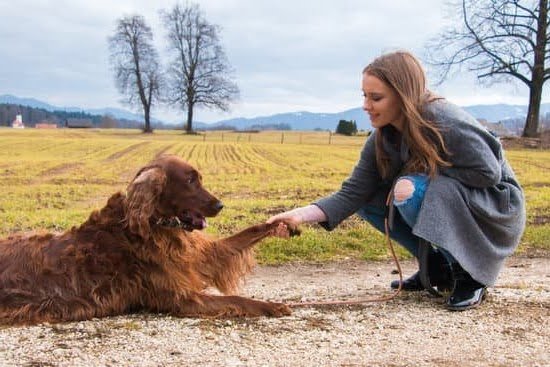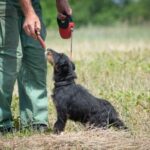Are you a new dog owner looking for the best ways to train your furry friend? Proper dog training and boarding are crucial for ensuring your pet’s well-being and obedience. Whether you’re considering enrolling your dog in a training program or looking for a quality boarding facility, it’s essential to understand the various methods and benefits associated with these services.
Dog training is not just about teaching your pet basic commands; it’s also about instilling good behavior, socialization, and ensuring their safety. The right training can help build a strong bond between you and your dog, making them more enjoyable companions at home as well as when out in public spaces. It’s important to understand different training methods available so that you can choose what works best for your pet’s unique personality and needs.
When considering professional dog training, it’s equally important to find the right trainer who understands your dog’s temperament, behavior, and specific training requirements. Additionally, boarding your dog while they undergo training can offer many benefits, including consistent routines, socialization with other dogs, and specialized attention from trained staff. Knowing what to look for in a quality boarding facility can ensure that your pet receives the best care during their stay.
Understanding the Different Methods of Dog Training
Dog training is an essential aspect of owning a pet, as it not only ensures the safety and well-being of your furry friend, but also enhances the bond between you and your canine companion. There are various methods of dog training, each with its own techniques and philosophies. Understanding the different methods of dog training can help you choose the best approach for your pet’s specific needs.
Positive Reinforcement
One popular method of dog training is positive reinforcement, which involves rewarding good behavior with treats, toys, or praise. This method focuses on teaching dogs to associate certain behaviors with positive outcomes, encouraging them to repeat those behaviors in the future.
Clicker Training
Clicker training is another effective method that utilizes a small noise-making device called a clicker to mark desired behaviors and communicate with the dog. This method allows for precise timing and clear communication during training sessions.
Alpha Dog or Dominance Training
On the other hand, some trainers may subscribe to alpha dog or dominance-based training methods, based on the theory that dogs are pack animals and must be dominated by their owners. However, this approach has been widely debated among professionals and is often considered controversial due to its potential negative effects on a dog’s behavior and well-being.
It is important for pet owners to research and understand the various methods of dog training before choosing one that aligns with their values and their pet’s temperament. Each dog is unique, so finding the right approach to train them effectively and humanely is crucial for their overall development and happiness.
Choosing the Right Dog Trainer for Your Pet
When it comes to choosing a dog trainer for your pet, it’s important to do your research and find the right fit for both you and your dog. Here are some key factors to consider when selecting a dog trainer:
- Qualifications: Look for a trainer who has received proper education and certification in dog training. This could include a degree in animal behavior or certification from a reputable organization such as the Association of Professional Dog Trainers (APDT).
- Training Methods: Different trainers utilize different methods when it comes to dog training. Some may focus on positive reinforcement, while others may use more traditional techniques. It’s crucial to choose a trainer whose methods align with your own beliefs about how dogs should be trained.
- Experience: Consider the experience level of the trainer. Have they worked with your dog’s breed before? Do they have experience addressing specific behavioral issues that your dog may have?
It’s also essential to consider the compatibility between the trainer and your dog. Schedule a meet-and-greet with potential trainers to see how they interact with your pet before making a decision.
Ultimately, finding the right dog trainer may take some time and effort, but choosing someone who understands and respects both you and your pet is crucial for successful training.
Remember, professional dog training and boarding services often go hand-in-hand, so look for facilities that offer both services if you’re considering boarding your pet while they undergo training. This can help ensure consistency in their training routine while providing them with a safe and comfortable environment during their stay.
Benefits of Boarding Your Dog While Training
Boarding your dog while training can provide numerous benefits for both you and your pet. One of the main advantages of enrolling your dog in a boarding program during training is that it allows for focused, consistent learning in a new environment.
This can be especially beneficial for dogs with behavioral issues or those who may be easily distracted at home. By being in a structured environment, your dog can receive undivided attention from professional trainers, leading to more effective and efficient learning.
Additionally, boarding programs often offer intensive training sessions, where dogs receive multiple training sessions throughout the day. This concentrated approach to training can accelerate the learning process and help your dog grasp new commands and behaviors more quickly. Furthermore, boarding facilities may also provide socialization opportunities with other dogs, which is essential for a well-rounded and well-behaved pet.
Another advantage of boarding your dog while training is the peace of mind it can bring to pet owners. Rather than worrying about finding time in your busy schedule to work on training at home, you can rest assured that your dog is receiving consistent care and attention from experienced professionals. This can alleviate stress and allow you to focus on other responsibilities while knowing that your furry friend is in capable hands.
What to Look for in a Quality Dog Boarding Facility
When it comes to finding a quality dog boarding facility, there are several key factors to consider in order to ensure the safety and well-being of your furry friend while you are away.
Facility Cleanliness and Safety
One of the most important things to look for in a quality dog boarding facility is cleanliness and safety. When visiting a potential facility, take note of the overall cleanliness of the premises, including the living quarters, play areas, and any outdoor spaces. Additionally, inquire about the safety measures in place, such as secure fencing, supervision protocols, and emergency procedures.
Staff Qualifications and Experience
Another crucial aspect to consider is the qualifications and experience of the staff members at the boarding facility. It is essential that the staff members are trained in handling dogs of all temperaments and sizes, as well as have proper certification in pet first aid and CPR. Inquire about their experience in caring for dogs, especially those with special needs or specific behavioral issues.
Accommodations and Amenities
Finally, when evaluating a potential dog boarding facility, assess the accommodations and amenities that they offer. Look for spacious living quarters with comfortable bedding, access to outdoor play areas or exercise facilities, as well as any additional services or amenities that may be beneficial for your dog’s well-being. Some facilities may offer grooming services, training programs, or even live webcams for owners to check in on their pets during their stay.
By taking these factors into consideration when selecting a quality dog boarding facility for your pet while undergoing training, you can have peace of mind knowing that your furry companion will be well-cared for in your absence.
Training Tips for New Dog Owners
When bringing a new dog into your home, it is important to remember that proper training plays a crucial role in creating a well-behaved and happy pet. One of the first training tips for new dog owners is to start early. Puppies are like sponges and can easily learn from their environment, so beginning their training as soon as they come home is essential.
Consistency is key when it comes to dog training. Dogs thrive on routine, so it’s important to set clear rules and expectations from the start. Use the same commands and gestures every time, and make sure that all family members are on board with the training methods being used.
Another valuable tip for new dog owners is positive reinforcement. Rewarding your dog for good behavior with treats, praise, or playtime can have a profound impact on their learning. It encourages them to repeat the desired behavior and strengthens the bond between you and your pet.
| Training Tips | New Dog Owners |
|---|---|
| Start early | Train puppies as soon as they come home |
| Consistency | Set clear rules and use the same commands/gestures |
| Positive Reinforcement | Reward good behavior with treats, praise, or playtime |
The Role of Socialization in Dog Training
Socialization plays a crucial role in the success of dog training and boarding. Proper socialization helps your dog become well-adjusted, less anxious, and more confident in different environments and situations. It is an essential aspect of dog training that should not be overlooked. Here are some key points to consider when it comes to the role of socialization in dog training:
- Early Socialization: Early socialization is important for puppies as it helps them build positive associations with new people, animals, and experiences. Exposing your puppy to different environments and situations from a young age can help prevent behavior problems in the future.
- Positive Interactions: Socializing your dog with other well-behaved dogs and friendly people can help them learn how to communicate and interact appropriately. Positive interactions can boost their confidence and reduce the likelihood of aggression or fear-based behavior.
- Training Environments: Exposing your dog to various training environments such as parks, sidewalks, or busy streets can help them generalize their training and behave appropriately in different settings. This can be particularly valuable if you plan to board your dog while they undergo training.
Overall, socialization is a vital component of dog training as it helps dogs develop good manners, confidence, and adaptability. When choosing a dog trainer for your pet, inquire about their approach to socialization to ensure that it aligns with your goals for your furry friend.
Common Mistakes to Avoid in Dog Training and Boarding
When it comes to dog training and boarding, there are some common mistakes that pet owners should avoid in order to ensure the best experience for their furry friends. One of the most common mistakes is inconsistency. Consistency is key when it comes to dog training, so it’s important to establish clear rules and stick to them.
This includes everything from potty training to obedience commands. Inconsistency can lead to confusion and frustration for your dog, making the training process much more difficult.
Another mistake to avoid is using punishment as the primary method of training. While it’s important to correct unwanted behaviors, using only punishment without positive reinforcement can have negative effects on your dog’s behavior and well-being. Positive reinforcement, such as treats, praise, and play, should be the primary focus of training to encourage good behavior.
Additionally, a common mistake is neglecting socialization. Socializing your dog with other animals and people is crucial for their development and overall behavior. Proper socialization can prevent fearfulness and aggression in dogs, so be sure to expose your pup to different environments and experiences from a young age.
In order to ensure successful dog training and boarding, it’s important for pet owners to do their research and seek guidance from professional trainers. By avoiding these common mistakes, you can set your dog up for success in their training journey.
| Common Mistakes | How to Avoid |
|---|---|
| Inconsistency | Establish clear rules and stick to them |
| Punishment-Based Training | Focus on positive reinforcement |
| Neglecting Socialization | Expose your pup to different environments and experiences |
The Long-Term Benefits of Professional Dog Training and Boarding
In conclusion, investing in professional dog training and boarding for your pet can yield long-term benefits that contribute to their overall well-being and your peace of mind. By ensuring that your dog receives proper training, you are setting the foundation for a healthy and happy relationship with them. Professional trainers understand the different methods of dog training and can tailor their approach to suit your pet’s unique needs, leading to more effective results.
Additionally, boarding your dog while they undergo training can provide numerous benefits. Not only does it give them a dedicated environment where they can focus on learning new behaviors, but it also allows them to socialize with other dogs under the supervision of trained staff. This exposure can help with their overall development and behavior, making the training process more comprehensive and effective.
When seeking professional dog training and boarding services, it is important to consider factors such as the trainer’s experience, credentials, and approach to training. Furthermore, when choosing a boarding facility, look for one that provides a safe, clean, and stimulating environment for your pet. By taking these steps and avoiding common mistakes in dog training and boarding, you are investing in the long-term health and happiness of your beloved canine companion.
Frequently Asked Questions
Is It OK to Send Your Dog Away for Training?
Sending your dog away for training can be beneficial if you’re unable to train them yourself or if they require specialized training. However, it’s important to thoroughly research the facility and ensure they use positive reinforcement methods.
What Is the Best Age to Board and Train a Dog?
The best age to board and train a dog is typically between 4-6 months old. At this age, they are more receptive to learning and socialization. However, it ultimately depends on the individual dog and their specific needs.
Where Can I Leave My Dog When I Go on Vacation?
When going on vacation, you can leave your dog at a reputable boarding kennel, hire a pet sitter to stay in your home, or ask a trusted friend or family member to care for them. It’s essential to choose an option that ensures your dog’s safety and well-being while you’re away.

Welcome to the blog! I am a professional dog trainer and have been working with dogs for many years. In this blog, I will be discussing various topics related to dog training, including tips, tricks, and advice. I hope you find this information helpful and informative. Thanks for reading!





